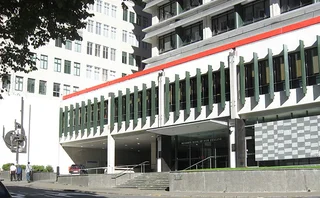
Bank of England and ECB act to boost markets
The Bank of England (BOE) and the European Central Bank (ECB) both left interest rates unchanged, but eased liquidity supply as the credit squeeze continued today.
While the BOE rate remained at 5.75%, the bank warned "it is too soon to tell how far the disruption in financial markets will impair the availability of credit to companies and households". It listed credit spreads and volumes in particular as keys to its forecasts for inflation, which in turn will determine future rate changes. Inflation is expected to remain "around or a little below the 2% target for the next few months", said the bank.
The BOE also increased the available borrowing reserves from £16.56 billion to £17.63 billion in an attempt to bring the interbank rate closer to the base rate. The three-month London interbank rate, Libor, rose to 6.8% yesterday, the highest in eight years. The bank said it could raise reserves by a further 25% to a total of £22 billion if rates did not fall. One market observer yesterday blamed widespread uncertainty for the high rates. "From the high Libor we can conclude that the market is worried about more bank problems," he said, adding that high rates did not represent a shortage of liquidity so much as a perceived need for deeper capital reserves, and a fear of counterparty risk.
Meanwhile, the ECB boosted liquidity by introducing €42.1 billion in three-month loans to the market today, although it kept interest rates at 4%. ECB vice-president Lucas Papademos said price risks remained on the upside and economic fundamentals were strong. ECB president Jean-Claude Trichet said the bank lacked the data it needed to draw "further conclusions on monetary policy".
Only users who have a paid subscription or are part of a corporate subscription are able to print or copy content.
To access these options, along with all other subscription benefits, please contact info@risk.net or view our subscription options here: http://subscriptions.risk.net/subscribe
You are currently unable to print this content. Please contact info@risk.net to find out more.
You are currently unable to copy this content. Please contact info@risk.net to find out more.
Copyright Infopro Digital Limited. All rights reserved.
As outlined in our terms and conditions, https://www.infopro-digital.com/terms-and-conditions/subscriptions/ (point 2.4), printing is limited to a single copy.
If you would like to purchase additional rights please email info@risk.net
Copyright Infopro Digital Limited. All rights reserved.
You may share this content using our article tools. As outlined in our terms and conditions, https://www.infopro-digital.com/terms-and-conditions/subscriptions/ (clause 2.4), an Authorised User may only make one copy of the materials for their own personal use. You must also comply with the restrictions in clause 2.5.
If you would like to purchase additional rights please email info@risk.net
More on Central banks
Adopt FX code or face regulation, warn central bankers
Global code of conduct must be adopted, Schiavi and Debelle insist
Malaysia central bank: credit reporting could unite Asean markets
Asean Economic Community faces challenges, says deputy governor Muhammad bin Ibrahim
BoE's Carney: liquidity support for CCPs is a 'last-resort option'
BoE governor insists clearing houses must have enough liquidity to cope with default of two big member firms
BoE deputy governor Paul Tucker quits after 33 years
Deputy governor is bound for academia in the US after helping with transition to new Carney regime
Local regulators push for consistent standards across Asean region – Thai SEC interview
Underpinning the integration of regional capital markets is a major concern for Vorapol Socatiyanurak, secretary general of Thailand's Securities and Exchange Commission
New governor signs revised policy target agreement in New Zealand
The Reserve Bank of New Zealand’s policy targets agreement will come into effect on the same day Graeme Wheeler takes over as governor; document includes "stronger focus" on financial stability
Central banks turn to RMB assets
The international brigade
Central banks launch joint investigation into Libor scandal
Economic Consultative Committee announces examination of reference rates used in financial markets







